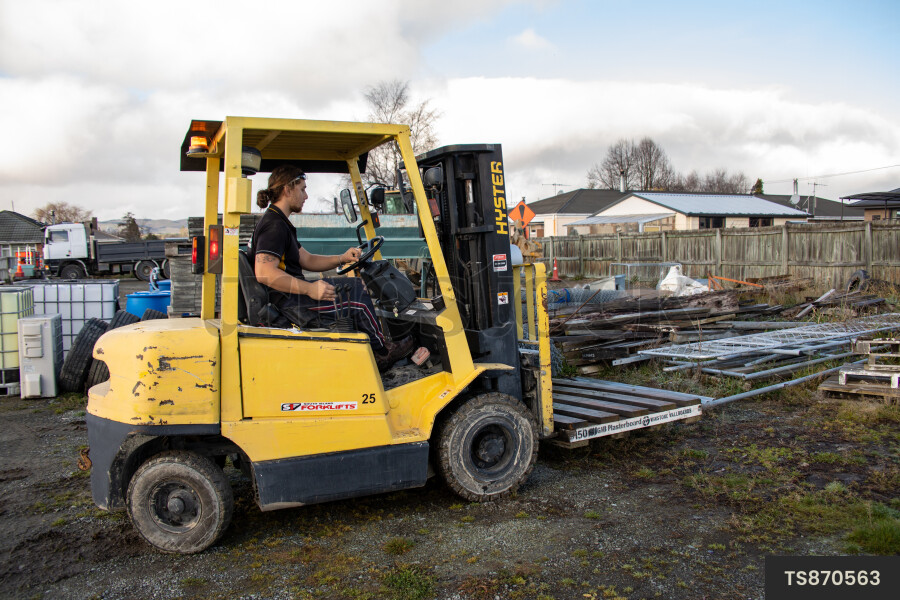In homes, offices, and skyscrapers across the United States, painters add the final touch that brings buildings to life. A well-done paint job doesn’t just make a space beautiful — it protects, preserves, and increases value. Behind every polished wall and flawless exterior stands a skilled painter who understands the balance between art and precision.
If you’ve ever wondered how to start a hands-on career that’s both creative and stable, painting could be your perfect path. As construction and renovation projects rise nationwide, professional painters are in high demand, offering strong income potential and career growth for both beginners and experienced tradespeople.
This guide will explain what painters really do, how to get started, and how you can climb from an entry-level apprentice to a respected professional in the field.

Why Painting is More Than Just “Putting Color on Walls”
Painting is one of the most visible and essential trades in construction and home improvement. Whether it’s refreshing an office building, coating steel structures, or adding curb appeal to a family home, painting protects surfaces from weather damage, rust, and decay — while improving aesthetic value.
According to the U.S. Bureau of Labor Statistics, the demand for painters is expected to remain steady, especially as more homeowners renovate and businesses upgrade their facilities. Unlike many office-based jobs, painting offers something rare — immediate results and visible satisfaction in every project completed.
Painters can specialize in various areas, including:
- Residential Painting: Homes, apartments, interiors, and exteriors.
- Commercial Painting: Offices, schools, hospitals, and retail buildings.
- Industrial Painting: Factories, bridges, pipelines, and steel structures requiring durable coatings.
- Decorative or Fine Finishing: Faux finishes, murals, and high-end custom designs.
Each area requires different techniques, tools, and certifications, allowing painters to develop specialized skills — and higher pay.
What Does a Painter Actually Do?
A professional painter’s day involves far more than rolling paint on walls. Key responsibilities include:
- Surface Preparation: Cleaning, sanding, patching, and priming to ensure long-lasting results.
- Material Selection: Choosing the right paint, coating, or sealant for each surface and condition.
- Color Consultation: Helping clients select colors and finishes that suit the space.
- Application Techniques: Using brushes, rollers, or spray systems for even coverage.
- Cleanup and Maintenance: Ensuring job sites are clean and paints are stored safely.
Professional painters must also understand safety procedures, especially when working on scaffolding, with chemical coatings, or in enclosed environments.
How to Become a Professional Painter
Unlike many trades, painting offers a low barrier to entry — but mastering it requires patience, skill, and practice. Here’s how to begin your journey:
- Finish High School or Earn a GED
Most employers prefer applicants with basic education and good physical coordination. - Get On-the-Job Training or an Apprenticeship
Many painters start as helpers or apprentices, learning from experienced professionals. Apprenticeships (often offered by trade unions or contractors) typically last 3 to 4 years, combining hands-on work with technical instruction in color theory, safety, and surface prep. - Develop Specialized Skills
Learn advanced techniques such as spray painting, faux finishing, or industrial coatings. Certifications from organizations like NACE International or SSPC can help you qualify for higher-paying industrial jobs. - Obtain a License (if required in your state)
Some states, such as California, require painters to hold a contractor’s license to work independently or bid on larger projects. - Keep Building Experience and Portfolio
Document your best work with before-and-after photos. A solid portfolio helps attract clients or better-paying employers.
Career Growth: From Apprentice to Painting Contractor
A painting career offers clear growth opportunities for those who stay committed and build expertise:
- Apprentice Painter (0–2 years)
- Role: Learn basic surface preparation, tool handling, and safety practices.
- Average Pay: $18–$25/hour.
- Goal: Build experience and attention to detail.
- Journeyman Painter (2–5 years)
- Role: Work independently on residential or commercial projects; may supervise small crews.
- Average Pay: $25–$35/hour.
- Goal: Gain certifications, improve efficiency, and develop client communication skills.
- Master Painter or Contractor (5+ years)
- Role: Manage large projects, estimate costs, and oversee teams or a painting business.
- Average Pay: $70,000–$120,000/year (or more for business owners).
- Goal: Achieve professional independence and build a brand reputation.
Skilled painters who branch into business ownership or specialty coatings often see the highest earning potential, especially in urban or industrial markets.
Skills Every Great Painter Needs
To succeed in the painting trade, you’ll need more than a steady hand:
- Attention to detail: Small mistakes can impact the entire finish.
- Color and design sense: Understanding shades, lighting, and visual flow.
- Physical endurance: Painting requires stamina and balance for long hours.
- Problem-solving: Managing surface issues, weather delays, or client preferences.
- Customer service: Especially important for residential and commercial projects.
Painters also benefit from learning project management and estimating, which can lead to leadership roles or business opportunities.
Earnings and Job Outlook
The average annual salary for painters in the U.S. is around $47,000, but experienced and specialized painters can make $70,000 or more, especially in high-cost states like California, New York, and Washington.
Self-employed painters or contractors often earn significantly more by managing teams or subcontracting to large developers. The industry is also recession-resistant, since both new construction and renovations consistently require skilled painters.

Final Thoughts: Painting a Path to Stability and Success
Being a painter isn’t just about color — it’s about craftsmanship, pride, and transformation. Each job you complete adds value to a home, a business, or an entire community.
For those who enjoy hands-on work, creativity, and tangible results, painting offers a career that’s flexible, stable, and financially rewarding.
Start small, learn from experts, and master your craft — because in painting, your work speaks louder than words. And when the walls shine, so does your career. 🎨



